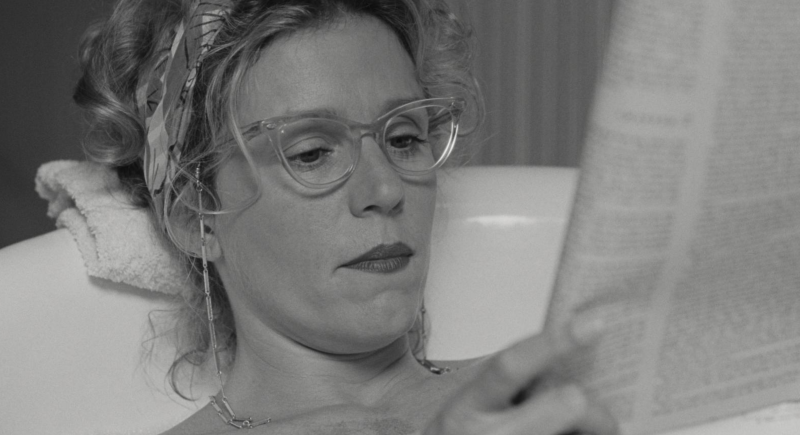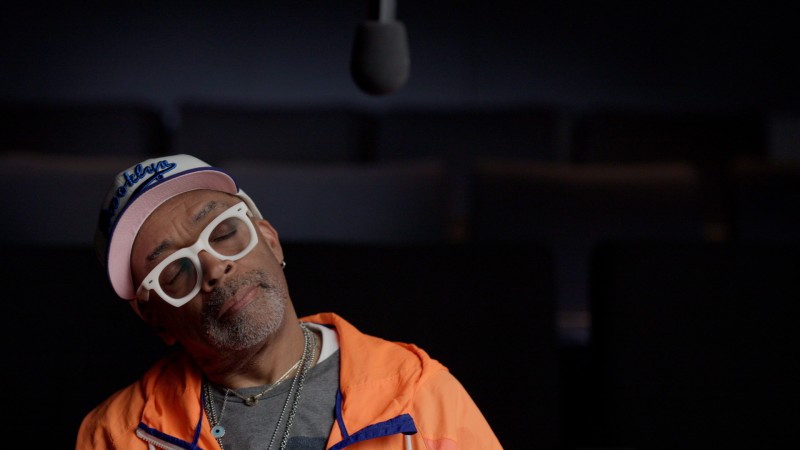Gleaner’s Art: An Agnès Varda Exhibition
Agnès Varda has always been a shape-shifter. First a still photographer, she became a filmmaker at age twenty-six, and then, over the past decade and a half, a gallery artist. Her serenely beautiful show at Blum & Poe gallery in New York (through April 15) is a hop-skip-jump retrospective of her photography and gallery art that opens with a series of eighteen vintage silver prints from 1954 and is anchored by three photographic self-portraits. Depicting Varda respectively in her youth, midlife, and old age, they differ in their collage techniques but show her sharp-eyed gaze and Joan of Arc bowl haircut poignantly unchanged over sixty years. Elsewhere in the exhibition, three meditative moving-image installations fulfill her succinct self-description—that she has transformed herself “from an old filmmaker into a young artist.”
Elegantly mounted in small rooms on the two floors of the Blum & Poe space, the show is arranged in a way that accentuates two of Varda’s strengths—her framing of both still and moving images and the intimacy of her work in both mediums. The eighteen early photographs are arranged to replicate her first public exhibition of her work, which she organized by herself in 1954 in the courtyard of the house on the Rue Daguerre where she still lives today. The images are direct and mysterious. Three boys confront the camera, their faces completely covered in animal masks, their bodies swathed in winter coats and scarfs, the bare knees of two of them jutting out, boney and vulnerable between socks and short pants. Alexander Calder, his wife, and their daughters sit on a park bench in Paris, the quartet sullenly staring into the lens as if, having agreed to pose for a family portrait, they suddenly regret spending their time to please their friend Agnès.
Other images in this grouping are just as dramatic and unyielding in their mystery. In Ulysse, a man and young boy, both naked, are captured on a rocky beach. The man has his back to the camera, the boy is half turned looking toward a dead goat in the extreme right foreground of the image. The photo suggests a layering of time: the man exists in the immediate present, the goat might have washed ashore out of the mythological past, the boy is caught uneasily between them. In the more strikingly homoerotic Nus dans les ruines, two naked men are posed on the site of a house that seems to have been abandoned mid-construction. One man is facing away from the camera, his relaxed stance belying the mesmerizing perfection of his back, buttocks, and legs. The other is seated in profile within an empty window frame. What could have been merely an exercise in composition—frames within frames—becomes an invitation to narrative. Are the men construction workers? Did Varda find them on the job? Why are they naked? Do they even know each other? What could be the story behind this photograph?
Some of the photographs were taken in Sète, the beach town in the south of France where Varda lived as a teenager and where she shot her first feature, La Pointe Courte, which was made in 1954, the same year that she mounted the exhibition of these eighteen images. Like the photos, the film was shot in black and white, largely with natural light, the mist and clouds softening the Mediterranean sun. Influenced by Italian neorealism (although Varda claimed that she had seen only ten films in her entire life before she made it), La Pointe Courte was effectively the first feature film of the French New Wave, directed by a novice without any of the trappings—stars, décor—of the studio system. Varda went on to make twenty more feature-length fiction and documentary films and just as many shorts.
“If we were to open people up, we would find a landscape. If we were to open me up, we would find beaches.”



